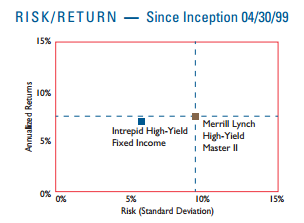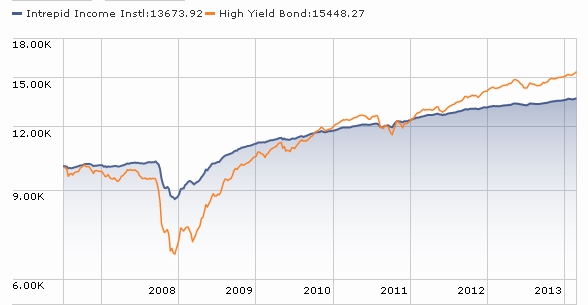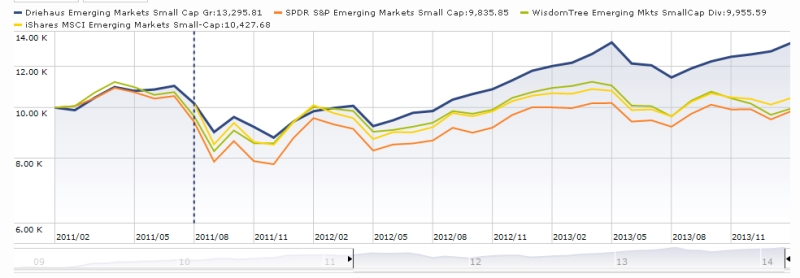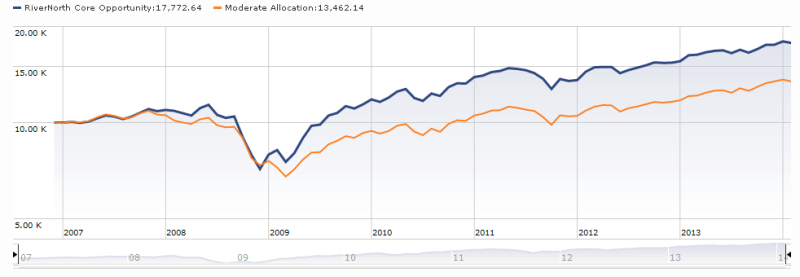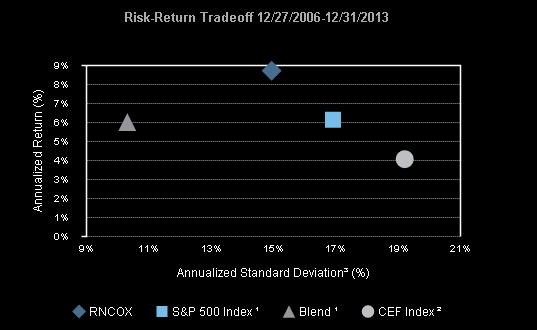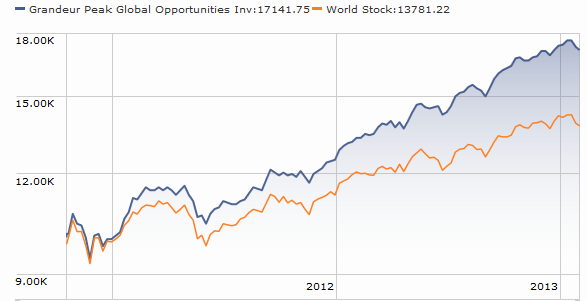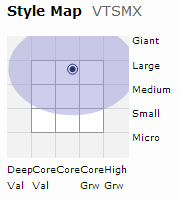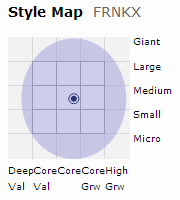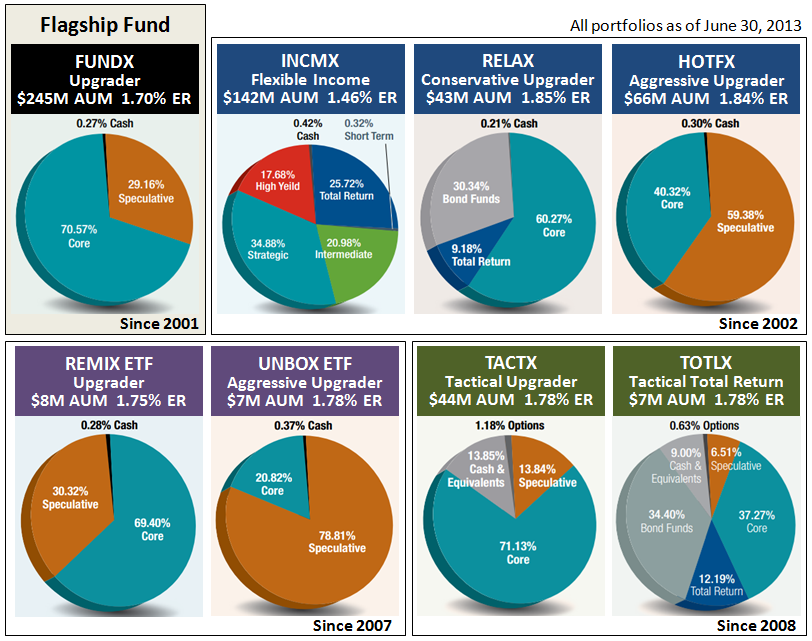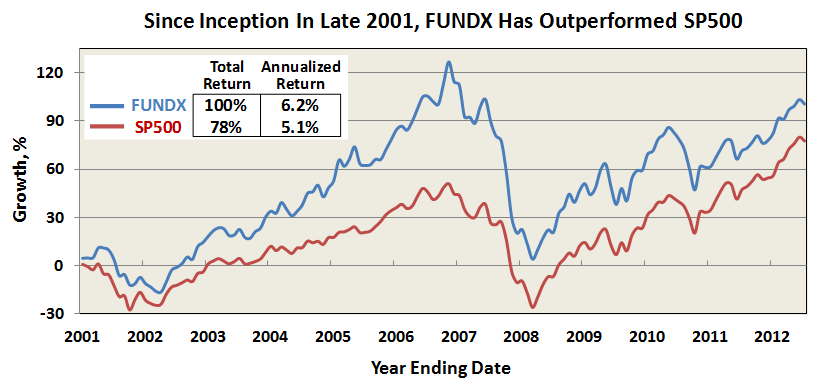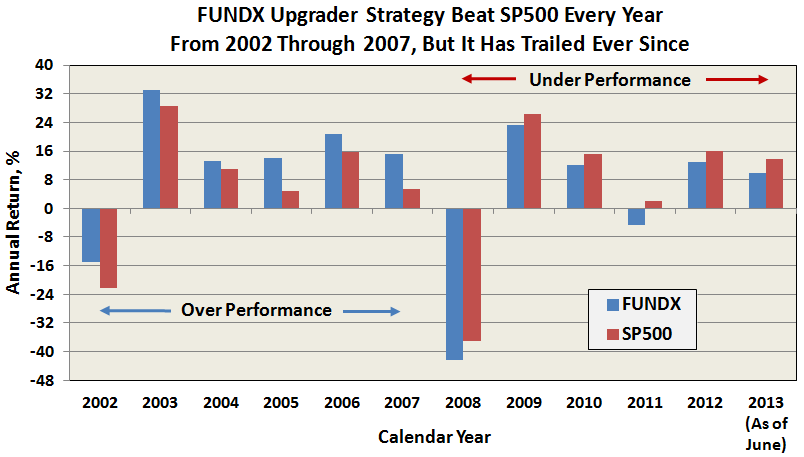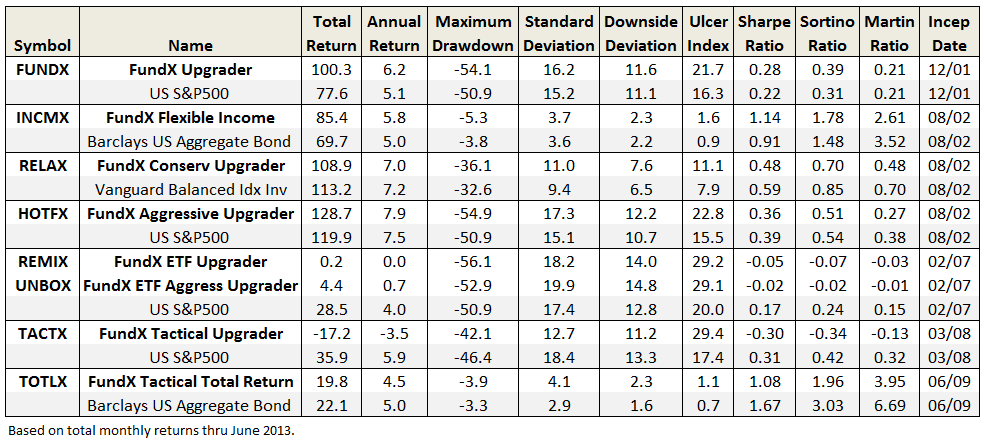By David Snowball
Baird Ultra Short Bond Fund
Baird Ultra Short Bond Fund will seek current income consistent with preservation of capital. . They intend to invest in US and international government and corporate bonds, asset-backed and mortgage-backed securities and money market instruments. No more than 10% of the portfolio may be invested in high-yield debt. They’re willing to make sector and interest rate bets but will keep the duration under one year. The fund will be managed by a team led by Mary Ellen Stanek, Baird’s CIO. The investment minimum will be $2500 for Investor class classes, reduced to $1000 for IRAs, and the initial expense ratio, after waivers, is 0.40%.
Balter Long/Short Equity Fund
Balter Long/Short Equity Fund will seek long-term capital appreciation. They intend to invest in all of the predictable long/short stuff. The fund will be managed by Apis Capital Advisors and Midwoods Capital Management. Apis uses a fundamental bottom-up, research-driven process with a small/midcap bias. Midwoods invests predominantly long and short in U.S. small-cap equities based on lots of on-site/in-the-field research. Both are small advisors (under $100 million AUM) that have very successful nine-to-ten year old private partnerships based on these strategies. The investment minimum will be $5000 and the initial expense ratio, after waivers, is a daunting 3.22%. While I know that you’ve got to pay to attract talent, I’d still disparage the fund for its expenses except for the managers’ record and their smaller-cap focus which is rare and can be quite profitable.
Bradesco Latin American Equity Fund
Bradesco Latin American Equity Fund will seek long-term capital appreciation by investing in the stocks of firms located in, or doing a majority of their business in, Latin America. For their purposes, Belize, French Guyana, Guyana, and Suriname are not Latin. (Nuts. Do you know how hard it is to get appropriate Belizian exposure?) They anticipate a 30-40 stock portfolio but might also buy or sell derivatives. The fund will be managed by Herculano Anibal Alves, the Equities Chief Investment Officer of BRAM Brazil, and his team. The investment minimum is not yet set and the initial expense ratio, after waivers, is 2.0%.
Bradesco Brazilian Hard Currency Bond Fund
Bradesco Brazilian Hard Currency Bond Fund will seek to achieve total return through income and capital appreciation. They intend to invest in fixed-income and floating rate debt instruments of the Brazilian government, Brazilian governmental entities, agencies, and other issuers the obligations of which are guaranteed by Brazil and Brazilian companies, each of which are denominated in U.S. dollars and foreign hard currencies. The fund will be managed by Reinaldo Le Grazie, is the Chief Investment Officer of Fixed Income and Multi Strategies of BRAM Brazil, and his team. The investment minimum is not yet set and the initial expense ratio, after waivers, is 1.75%.
Brown Advisory Mortgage Securities Fund
Brown Advisory Mortgage Securities Fund will seek to maximize total return consistent with preservation of capital. They intend to invest in mortgage-backed securities such as residential mortgage-backed, commercial mortgage-backed, and stripped mortgage-backed securities, as well as collateralized mortgage and inverse floating rate obligations. The fund will be managed by Thomas D.D. Graff, manager of Brown Advisory Tactical Bond Fund. The investment minimum will be $5000, reduced to $2000 for IRAs and AIPs, and the initial expense ratio, after waivers, is 0.54%.
Catalyst/Equity Compass Share Buyback Fund
Catalyst/Equity Compass Share Buyback Fund will seek long-term capital appreciation by investing primarily in the stocks of companies in the Russell 3000 that have announced their intention to repurchase a portion of the company’s outstanding shares. Michael Schoonover will be the portfolio manager and Timothy M. McCann will be the Portfolio Management Consultant. Apparently the consultant will be the fund’s risk-management specialist. The investment minimum for the no-load institutional shares will be $2,500 for a regular account, $2,500 for an IRA or $100 for an account established with an automatic investment plan. The initial expense ratio, after waivers, is 1.25%.
Champlain All Cap Fund
Champlain All Cap Fund will seek capital appreciation. They intend to invest in US and foreign firms with strong long-term fundamentals, superior capital appreciation potential and attractive stock valuations. The fund will be managed by Van Harissis and Scott Brayman. These are the same folks who run Champlain Small Cap and Champlain Mid Cap, both of which are Silver-rated by Morningstar. The investment minimum will be $10,000, reduced to $3,000 for IRAs and the initial expense ratio, after waivers, is 1.15% .
Clifford Capital Partners Fund
Clifford Capital Partners Fund will seek capital appreciation by investing in 25-35 stocks whose price reflects “a margin of safety.” The portfolio will be divided into three sleeves: Core, high-quality, wide-moat companies (50-75% of the portfolio), Contrarian, lower quality but higher return firms (0-50%) and cash (0-25%). The fund will be managed by Ryan P. Batchelor. Mr. Batchelor founded the advisor. Before that he was a strategist at Wells Capital and a Morningstar equity analyst. The investment minimum will be $2500 and the initial expense ratio, after waivers, is 1.10%.
Consilium Emerging Market Small Cap Fund
Consilium Emerging Market Small Cap Fund will seek long-term capital appreciation. They intend to invest in common and preferred stocks of firms with market caps below $3 billion. The fund will be managed by Jonathan Binder, Chief Investment Officer of Consilium Investment Management. Consilium is actually a sub-adviser and it’s possible that the adviser will add other teams in the future. Mr. Binder is a former hedge fund guy but the prospectus does not mention anything about his past performance. The investment minimum will be $2500 and the initial expense ratio is 2.05%.
CVR Dynamic Allocation Fund
CVR Dynamic Allocation Fund will seek “to preserve and increase the purchasing power value of its shares over the long term.” The investment strategies section of their prospectus is quite poorly written; it appears that they have some mix of direct equity exposure, tactical equity exposure through ETFs and a managed futures strategy. I have no idea of how they’re allocating between the strategies. The fund will be managed by Peter Higgins and William Monaghan, both CAIAs. What, you might ask, is that? Chartered Alternative Investment Analyst, a designation which, according to the CAIA website, “gives you professional credibility, access, and connections.” The investment minimum will be $2500 and the initial expense ratio is not yet set.
EuroPac International Dividend Income Fund
EuroPac International Dividend Income Fund, Institutional Shares, will seek income and maximize growth of income. (Me, too.) They intend to invest in dividend-paying stocks of equity securities of companies located in Europe and the Pacific Rim. They’re looking for “sustainably high dividends that grow over time.” The fund is based on a limited partnership, Spongebob Ventures II LLC (apparently Viacom doesn’t mind if hedge funds infringe on their trademarks), which commenced operations February 28, 2010. From inception the partnership returned 11.3% annually while its benchmark index made 3.75%. The fund will be managed by James Nelson and Patrick B. Rien, both of Euro Pacific Asset Management. The investment minimum will be $15,000 and the initial expense ratio, after waivers, is 1.25%.
Fidelity Event Driven Opportunities Fund
Fidelity Event Driven Opportunities Fund will seek capital appreciation. They intend to invest in the stocks of firms involved in a “special situation event,” which may include corporate reorganizations, changes in beneficial ownership, deletion from a market index, material changes in management structure or corporate strategy, or changes to capital structure. They might also buy bonds. Being Fidelity, they don’t feel compelled to offer much more than a series of bullet-pointed options. The fund will be managed by Arvind Navaratnam, a Fidelity analyst whose 2012 wedding was covered by ModernLuxury.com. (sigh) The investment minimum will be $2500, reduced to $200 for IRAs. Expenses not yet set.
Geneva Advisors Mid Cap Growth Fund
Geneva Advisors Mid Cap Growth Fund, “R” shares, will seek capital appreciation by investing in US midcap stocks. They’re looking for “quality growth companies.” The fund will be managed by Robert C. Bridges, John P. Huber and Daniel P. Delany. These are all former William Blair managers whose private accounts have consistently, and in some cases substantially, trailed their benchmark over the past 1, 3 and 5 year periods, and since inception.The investment minimum will be $1000 and the initial expense ratio, after waivers, is 1.45%.
Geneva Advisors Small Cap Opportunities Fund
Geneva Advisors Small Cap Opportunities Fund, “R” shares, will seek capital appreciation by investing in the stock of “smaller, quality companies with above average growth or emerging growth opportunities.” “Smaller” translates to “under $2.5 billion.”. The fund will be managed by Robert C. Bridges and Daniel P. Delany. The investment minimum will be $1000 and the initial expense ratio, after waivers, is 1.45%.
Grant Park Multi Alternative Strategies Fund
Grant Park Multi Alternative Strategies Fund, “N” shares, will seek positive absolute returns which sets them squarely at odds with all those funds seeking negative absolute returns. (Perhaps The Kelvin Fund, which seeks absolute zero?) Their strategy, like many relationships, is complicated. They intend to invest in four different strategies to give themselves exposure to 40-60 markets (though they don’t quite define what qualifies as “a market”). The strategies are Long/Short Global Financial, Dynamic Commodities, Upside Capture (“a permanent allocation to a basket of investments across multiple asset classes”) and Unconstrained Interest Rate Strategy (long/short investments in short- to intermediate term fixed income securities). The fund will be managed by John Krautsack of EMC Capital Advisors. There’s an entry in the prospectus’s Table of Contents entitled “Prior Performance of Sub-Adviser” but there is no such section in the document. The investment minimum will be $2500 and the initial expense ratio, after waivers, is 1.98%.
Hodges Small Intrinsic Value Fund
Hodges Small Intrinsic Value Fund (HDSVX) will seek long-term capital appreciation. They intend to invest at least 80% in small cap (under $3.2 billion) stocks which have “a high amount of intrinsic asset value, low price to book ratios, above average dividend yields, low PE multiples, or the potential for a turnaround in the underlying fundamentals.” The other 20% might go to larger cap stocks, bonds, or ETFs. Up to 25% of the portfolio might be invested overseas. The fund will be managed by a team led by Eric J. Marshall, Hodge’s president. Mr. Marshall is part of the team which runs the five-star Hodges Small Cap Fund. The investment minimum will be $1000 and the initial expense ratio, after waivers, is 1.29%.
Hodges Small-Mid Cap Fund
Hodges Small-Mid Cap Fund will seek long-term capital appreciation through investments in the common stock of small and mid cap companies. . They intend to invest in stocks “likely to have above-average growth or holds unrecognized relative value that can result in the potential for above-average capital appreciation.” The market cap range is $1 – 8 billion, though they’re not required to sell stocks which appreciate belong that level. They might invest up to 10% in microcaps or large caps. The fund will be managed by Don Hodges, Craig Hodges, their CIO and CEO, Eric J. Marshall, their president, and Gary M. Bradshaw. These are all pretty experienced guys, with the elder Mr. Hodges claiming 53 years in the industry. The investment minimum will be $1000 and the initial expense ratio, after waivers, is 1.40%.
Lazard Global Equity Select Portfolio
Lazard Global Equity Select Portfolio will seek long-term capital appreciation through an all-cap global portfolio, about which they disclose little. The fund will be managed by a team of folks led by Andrew Lacey. All of the team members are identified as working “on various” Lazard teams. (Well, huzzah.) The investment minimum will be $2500 and the initial expense ratio, after waivers, is 1.40%.
Otter Creek Long/Short Opportunity Fund
Otter Creek Long/Short Opportunity Fund will seek long-term capital appreciation with below-market volatility through a long/short portfolio. They’ll be positioned somewhere between 35% net short and 80% net long. They can also invest in high yield bonds or go to cash. The fund will be managed by a team from Otter Creek Capital Management. The team also runs an offshore fund and a hedge fund. The latter has been around since 1991 and uses the same discipline as the mutual fund will. From inception to the end of 2012, the hedge fund returned 11.3% annually while the S&P500 returned 8.5%. The bad news is that the fund was bludgeoned in 2012 (down 2% while the market was up 16%) and 2013 through August (up 4.5% versus 16.5% for the benchmark). The investment minimum will be $2500 and the initial expense ratio, after waivers, is 2.38%.
SilverPepper Merger Arbitrage Fund
SilverPepper Merger Arbitrage Fund will seek “to create returns that are largely uncorrelated with the returns of the general stock market. Regardless of whether the stock market is declining or rising, the Merger Arbitrage Fund also seeks capital appreciation.” They hope to make a series of small gains in relatively short time periods on the difference between a stock’s current price and the price offered by an acquiring firm. In general those deals close within a few months and, in general, the arbitrage gain can be realized regardless of the market’s general direction. The fund will be managed by Jeff O’Brien and Daniel Lancz of Glenfinnen Capital, LLC, a merger arbitrage specialist. The investment minimum will be $5000 and the expense is not yet set.
SilverPepper Commodity Strategies Global Macro Fund
SilverPepper Commodity Strategies Global Macro Fund, Advisor Shares, will seek “to create returns that are largely uncorrelated with the returns of the general stock, bond, currency and commodities markets. Regardless of whether these markets are rising or declining” it will also seek capital appreciation. . They intend to invest in both long and short positions in an array of asset classes based primarily on its views of commodity prices.” The fund will be managed by Renee Haugerud, Chief Investment Officer, and Geoff Fila, both of Galtere Ltd. Galtere is an advisor to institutional and high net worth investors and this is their flagship strategy. The investment minimum will be $5000 and the expense is not yet set.
Sirios Focus Fund
Sirios Focus Fund, Retail Class, will seek long-term capital appreciation by investing in 25-50 mid- to large-cap stocks. The portfolio will be global. The fund will be managed by John F. Brennan, Jr. Mr. Brennan used to be a portfolio manager for MFS. His separate account composite was up 2.5% annually for the five years ending in December 2012, while the S&P 500 was up 1.7%. The investment minimum will be $10,000 and the initial expense ratio, after waivers, is 1.75% .
Vanguard Global Minimum Volatility Fund
Vanguard Global Minimum Volatility Fund will seek to provide long-term capital appreciation with low volatility relative to the global equity market. They intend to use a quantitative strategy to invest in a bunch of low-volatility stocks. They’ll hedge their currency exposure. The fund will be managed by James D. Troyer, James P. Stetler, and Michael R. Roach. The investment minimum will be $3000 and the initial expense ratio, after waivers, is 0.30%.
Westcore Small-Cap Growth Fund
Westcore Small-Cap Growth Fund will seek to achieve long-term capital appreciation by investing primarily in small-capitalization growth companies. They intend to invest in stocks comparable in size to those in the Russell 2000 which have attractive growth prospects for earnings and/or cash flows. The fund will be managed by Mitch Begun and a team from Denver Investments. The investment minimum will be $2500 and the initial expense ratio, after waivers, is 1.30%.


